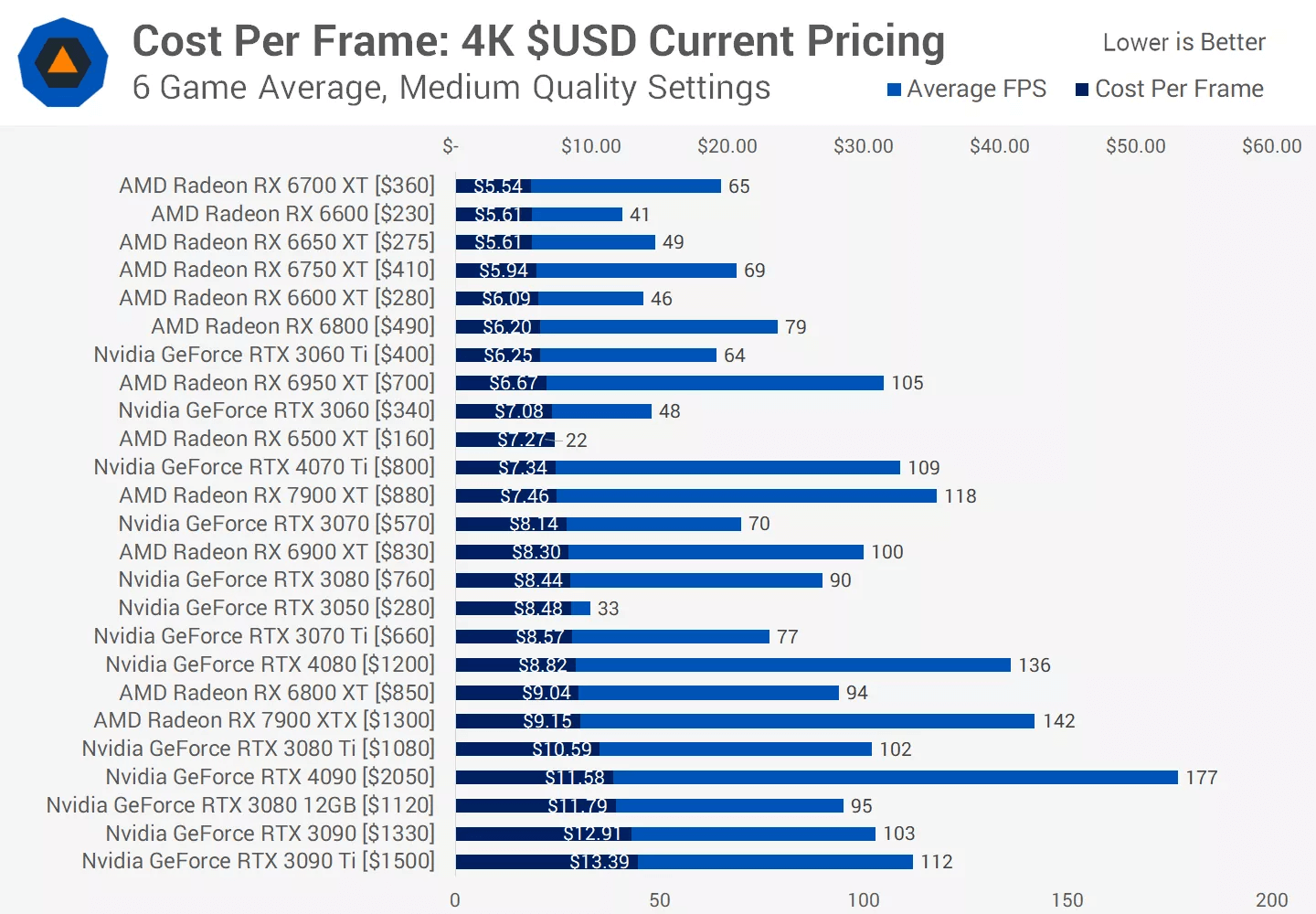Understanding The Recent GPU Price Increases

Table of Contents
The Impact of the Crypto Mining Boom on GPU Prices
The cryptocurrency mining boom, particularly the rise of Ethereum, significantly impacted GPU prices. The high computational power required for mining made GPUs, especially high-end models, incredibly attractive to miners.
Increased Demand
The surge in cryptocurrency mining created an unprecedented demand for GPUs. Miners bought GPUs in bulk, often purchasing entire shipments, leading to a drastic increase in demand that far outstripped supply.
- Popular Mining GPUs: NVIDIA's RTX 30 series (especially the 3060 Ti, 3070, and 3080) and AMD's Radeon RX 6000 series (RX 6600 XT, RX 6700 XT, RX 6800 XT) were particularly popular choices due to their high hashing power.
- Market Saturation: Miners' bulk purchases essentially created an artificial scarcity for consumers. Estimates suggest that GPU demand increased by as much as 50% during peak mining periods, crippling availability for legitimate users.
Reduced Availability for Consumers
This high demand from the cryptocurrency mining sector resulted in severe shortages for gamers, content creators, and professionals. Retail shelves were often empty, and waiting lists stretched for months.
- Secondary Market Inflation: The scarcity pushed prices sky-high on secondary markets like eBay and various used GPU marketplaces. Scalpers further exacerbated the problem, purchasing GPUs in bulk at MSRP and reselling them at exorbitant markups.
- MSRP vs. Street Price: The recommended manufacturer's suggested retail price (MSRP) became largely irrelevant, with the actual street price reflecting the inflated demand and limited supply.
The Global Chip Shortage and its Effect on GPU Production
The global semiconductor chip shortage, a multifaceted crisis impacting various industries, played a significant role in driving up GPU prices.
Supply Chain Disruptions
Numerous factors contributed to the chip shortage, creating significant disruptions to the global supply chain.
- COVID-19 Lockdowns: Factory closures and logistical bottlenecks due to the pandemic severely hampered the production and distribution of chips, including those used in GPUs.
- Raw Material Shortages: Shortages of crucial raw materials, including silicon wafers and specialized chemicals, further constrained production capacity.
Manufacturing Bottlenecks
These supply chain disruptions led to significant delays in GPU manufacturing, resulting in further reduced supply and increased prices.
- Complex Manufacturing Process: GPU manufacturing is an incredibly complex process, involving many steps and requiring specialized equipment. Even minor disruptions can have major consequences.
- Impact on NVIDIA and AMD: Both NVIDIA and AMD, the major GPU manufacturers, experienced production delays and struggled to meet the surging demand, leading to higher prices for their products.
Inflation and Rising Costs of Components
Rising inflation and increased costs of components also contributed to the higher GPU prices.
Increased Manufacturing Costs
The cost of producing GPUs increased significantly due to several factors.
- Raw Material Costs: The price of essential materials like memory chips (GDDR6X) and transistors increased dramatically, adding to the overall manufacturing cost.
- Energy and Transportation: Rising energy costs and increased transportation expenses further impacted production costs.
Impact on Manufacturer Pricing
Manufacturers like NVIDIA and AMD were forced to pass on these increased manufacturing costs to consumers, leading to higher retail prices for their GPUs.
- Economic Inflation: The overall economic inflation amplified the impact of increased manufacturing costs, leading to a more substantial price increase for GPUs.
- Pricing Strategies: Both companies adjusted their pricing strategies to account for these increased costs and maintain profitability.
Future Outlook for GPU Prices
While the situation remains dynamic, several factors suggest a potential for stabilization or even a decrease in GPU prices.
Potential for Stabilization
The post-Ethereum merge era has reduced the demand for GPUs from the cryptocurrency mining sector. This, coupled with improvements in supply chain efficiency and increased production capacity, offers hope for price stabilization.
- Easing of Chip Shortage: There are signs indicating a gradual easing of the global chip shortage, though this remains an ongoing process.
- Increased Production: Both manufacturers have invested heavily in increasing their production capacity to meet the ongoing demand.
Factors That Could Still Influence Prices
Several factors could continue to impact GPU prices in the future.
- Geopolitical Instability: Global political tensions and potential disruptions to international trade could continue to affect supply chains.
- Sustained High Demand: The continued strong demand for GPUs from various sectors, such as gaming, AI, and professional computing, could counterbalance the positive trends.
Conclusion
The recent GPU price increases are a result of a confluence of factors: the cryptocurrency mining boom, the global chip shortage, inflation, and rising component costs. While there are signs of potential stabilization and even price decreases in the future, several uncertainties remain. To stay informed about GPU price trends, the GPU market outlook, and understanding GPU pricing, it's crucial to follow industry news and analyses. Return to our site for future updates on GPU price increases and related developments in the tech market.

Featured Posts
-
 Espn Forecasts Red Soxs 2025 Season
Apr 28, 2025
Espn Forecasts Red Soxs 2025 Season
Apr 28, 2025 -
 Mets Rotation Has Pitchers Name Earned A Spot
Apr 28, 2025
Mets Rotation Has Pitchers Name Earned A Spot
Apr 28, 2025 -
 Gpu Price Hike Whats Causing The Surge
Apr 28, 2025
Gpu Price Hike Whats Causing The Surge
Apr 28, 2025 -
 Jj Redick On Espns Jefferson Decision A Positive Reaction
Apr 28, 2025
Jj Redick On Espns Jefferson Decision A Positive Reaction
Apr 28, 2025 -
 Musks X How The Recent Debt Sale Reshaped The Companys Finances
Apr 28, 2025
Musks X How The Recent Debt Sale Reshaped The Companys Finances
Apr 28, 2025
